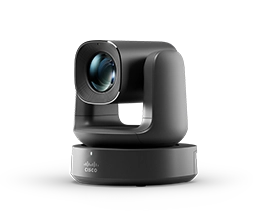Customer experience management, often abbreviated as CXM or CEM, involves strategically overseeing all interactions a customer has with a company. It aims to meet or exceed customer expectations at every touchpoint, thereby increasing customer satisfaction, loyalty, and advocacy. It encompasses understanding customer needs, designing optimal customer journeys, and consistently delivering exceptional service across all channels.
A guide to customer experience management
Gartner defines customer experience management as "the discipline of understanding customers and deploying strategic plans that enable cross-functional efforts and customer-centric culture to improve satisfaction, loyalty, and advocacy.”
There are two key terms worth noting in this definition:
Cross-functional: Like a symphony, all aspects of your business must work together to achieve a great customer experience. Sales, marketing, the contact center—no matter the department, each reflects your brand. If they’re not aligned, it can lead to fragmented experiences and customer churn.
Customer-centric: Organizations are increasingly prioritizing customer needs. How? Through consumer insights and customer data. These tools, combined with a handful of software solutions, allow them to create a better, personalized experience.
A CXM strategy is about making every customer interaction the best it can be. More than just a plan of action, it’s a collection of processes and tools your company uses to track, oversee, organize, and analyze interactions at all stages of the customer journey.
Whether they’re just discovering your brand or reaching out to the contact center, every customer engagement is an opportunity to learn about your audience and wow them with an exceptional customer experience.
What’s the difference between CXM and CRM?
CXM is closely related to customer relationship management (CRM). However, they’re two distinct terms that aren’t interchangeable.
Both disciplines help businesses understand consumers through customer data, but CRM is more focused on nurturing existing relationships, driving sales, and increasing loyalty. CRM systems assist this effort by streamlining customer information, tracking purchase history, and enhancing customer service.
Although these functions are essential, they’re just one piece of a much larger puzzle. For the bigger picture, organizations rely on CXM. As a more holistic and customer-centric discipline, it aims to optimize the overall CX strategy and encompasses the entire customer journey.
In summary, CRM is more suited for your sales and marketing team. CXM goes above and beyond, unifying all teams under one roof.
What is CXM software?
A great customer experience doesn’t just happen all on its own. Market research helps, but it only takes you so far. To truly understand customer needs, you need customer experience management software.
A CXM platform can help you harness customer information in one centralized location. It allows you to create an in-depth customer profile for each individual consumer, providing a 360-degree view of their interactions with your business.
Notably, CXM platforms come in various forms. An omnichannel contact center solution is, in effect, a customer experience management platform. Not only does it bridge the gap between disconnected business systems, but it also uses innovative technology to help teams activate customer data in real time.
Benefits of CX management
In general, CX management has numerous advantages. However, you’ll have a much easier time realizing these benefits with a high-quality customer experience management tool as the backbone of your CX strategy.
CXM, powered by the right solution, empowers you to:
Improve customer retention: It’s no secret customer churn is expensive, as the cost of replacing a customer is often much greater than retaining them. Acting on customer data allows you to offer a personalized experience and seamless journey from start to finish, thereby strengthening loyalty. Moreover, satisfied customers are more likely to endorse your brand to friends and family, becoming your best advocate.
Support product development: A CX management strategy is a great way to understand customer needs. By staying informed and gathering consumer insights, you can discover pain points and develop new solutions and services to address them. Contented, satisfied customers will appreciate your brand's effort and reward you with repeat business.
Maximize return on investment (ROI): A powerful customer experience management platform can yield tangible benefits. According to Forrester Consilting’s Total Economic Impact™ (TEI) study, Webex Contact Center delivered a 304% ROI and improved contact center operations over three years. How? Through cost savings and operational efficiencies.
Enable continuous improvement: Collecting customer feedback through web surveys, live chat, social media, and phone conversations can provide a roadmap to improve your CX strategy and enhance customer retention in the future. Feedback can also shed light on competitors and how consumers feel about their brands.
Uplift the employee experience: Agents also stand to gain from a CXM strategy. With a more positive customer experience, agents won’t have to handle as many upset consumers, resulting in a less stressful workday. A happier workplace leads to lower employee turnover.
Drive business growth: CX management has long-term organizational impacts. In 2020, Forrester reported that 41% of customer-obsessed companies achieved at least 10% revenue growth in their last fiscal year, compared to just 10% of less mature companies.
Common CXM challenges
Despite its advantages, implementing a CXM strategy requires addressing a few key obstacles. Here are some commonly encountered challenges:
Understanding customer expectations
According to Accenture, 64% of consumers wish companies would respond faster to their changing needs. Meanwhile, 88% of executives think customer expectations are changing faster than their business can keep up. There’s a disconnect here.
People want brands to meet their needs; the best way is through customer data. With richer, more granular information, businesses can tailor every customer interaction to the individual. The only problem? Organizational silos inhibit data collection, analysis, and activation.
Imagine using a contact center platform without integrating it with your customer relationship management system. Agents can’t easily leverage customer data if it’s locked away in a different solution. Worse yet, they have to waste time searching for the information they need, which leaves customers waiting for answers. And ultimately, it’s even more challenging to give people the personalized experience they’re looking for.
Delivering consistency across multiple channels
A common pain point for consumers is a need for more contextual awareness and consistency when interacting with companies across multiple channels. They expect seamless, frictionless experiences, but too often, they receive the opposite.
For example, let’s say someone reaches out to your customer success team via live chat, hoping to resolve an account issue. After some back and forth, they exit the conversation. Later, the problem returns, so they call your contact center directly and speak with an agent.
Without omnichannel support, the agent can’t retain any information communicated during the previous customer engagement. The caller has no choice but to repeat their issue while the agent scrambles to get up to speed on the conversation. This fragmented experience can lead to disjointed journeys, frustration, and negative effects on overall CX management.
Empowering agents
Did you know contact center turnover is twice that of any other profession?
According to a recent study, 50% of agent turnover is due to burnout. Work-related stress not only impacts mental health but also has a significant business effect. Contact centers with over 100 agents lose an average of $4.8 million annually due to turnover.
Simply put, the employee experience matters just as much as the customer experience. Taking care of your agents and empowering them to succeed can have a ripple effect on your target audience. After all, they’re ultimately the ones on the frontline interacting with customers.
Best practices for creating a CXM strategy
It’s clear that CXM can do wonders for your business. But how do you begin? Here are a few best practices you can use to craft a winning strategy:
Map the customer journey
People progress through several stages when they engage with your brand. This is what’s called the “customer journey.” Each stage represents a different point in the customer relationship, from initial awareness to repeat purchases and beyond.
Customer journey mapping is an excellent way to visualize this process from start to finish. It involves charting every single touchpoint your audience uses to interact with your company, allowing you to identify the key points of contact. For example, customer journey mapping could reveal the majority of your customers prefer social media, so you might dedicate more resources to managing that experience.
Gartner research indicates mapping the customer journey is one of three critical factors for CX success. Almost half of surveyed marketers agree the exercise positively impacts their CXM strategy.
Define key performance indicators (KPIs)
KPIs and customer success metrics are valuable sources of information. You can use them to learn more about customer needs, agent productivity, and operational efficiency. Moreover, these insights can expose areas of vulnerability, allowing you to make the right decisions and improvements.
Here are relevant KPIs you can measure to gauge the customer experience:
Net promoter score (NPS): A market research metric based on a single survey question asking respondents to rate the likelihood that they would recommend your brand to a friend, family member, or colleague.
Customer satisfaction score (CSAT): A metric that tracks how satisfied customers are with your products and services. It’s determined by customer feedback and usually represented as a percentage.
Customer effort score (CES): Customer effort reflects the amount of work someone has to exert to interact with your brand, use a product, or resolve an issue.
In terms of agent and operational efficiency, you might measure:
First-contact resolution: The percentage of support tickets agents resolve on the first attempt.
Self-service rate: The ratio of cases resolved by the customer, such as by using a chatbot, to the total number of cases at the contact center.
Average handle time: The amount of time an agent spends handling a customer's query, including the talk time, hold time, and any after-call work required to resolve the issue.
Build up internal capabilities
Although many legacy systems are still functional and valuable assets, it’s still important to implement strategic upgrades—especially in the contact center.
Often, agents rely on disjointed tools and point solutions to collaborate and address customer issues. They may also be using them for repetitive or manual tasks, which is both time-consuming and error-prone.
Fortunately, today’s CXM solutions bring automation to life. By streamlining mundane processes—such as customer information retrieval or customer profile creation—businesses can improve efficiency at scale. With the power of artificial intelligence (AI), contact centers can optimize agent productivity by allowing AI-driven tools to handle more straightforward customer inquiries.
How to choose CXM software: Key features and capabilities
Selecting a customer experience management platform is a big decision. Not only does it underpin your entire CXM strategy, but it also defines what your contact center can do. Without the right features, you may be unable to execute your strategy to its full potential.
Look for the following capabilities when evaluating your options:
Omnichannel support: An ideal CXM solution connects all channels into one comprehensive, centralized source of truth. That way, you retain full contextual awareness during customer interactions, including purchase histories, past conversations, and more.
Robust compatibility: At the very least, a CXM platform must integrate with your customer relationship management system. But, for maximum effectiveness, you’ll want a tool that integrates with all your key business applications through an open architecture. That way, you can build the technological backbone you need to deliver an exceptional customer experience.
Artificial intelligence: AI is changing the game when it comes to CXM. Voice- and text-based virtual agents powered by conversational AI give your customers an innovative self-service option for quick, easy resolutions. Plus, they free up time for agents to spend on more complex tasks.
Intelligent routing: Skills-based and capacity-based routing strategies automate case distribution, sending customers to agents with the expertise required to address their issues quickly and efficiently.
Agent assistance: Platforms like Webex Contact Center use AI to support agents and improve their productivity. For example, The Webex AI Assistant can automatically suggest agents' responses while accounting for context and customer history. It also listens for cues during conversations that indicate agent burnout, allowing supervisors to step in and relieve at-risk employees.
Energize your CX strategy with Webex
The features and capabilities outlined above are just scratching the surface of what an innovative CXM platform can do. With Webex Contact Center, you gain a full suite of integrated, AI-powered tools to fuel your strategy and improve the customer experience.
Ready to take CX to the next level? Learn more about Webex Contact Center today.







